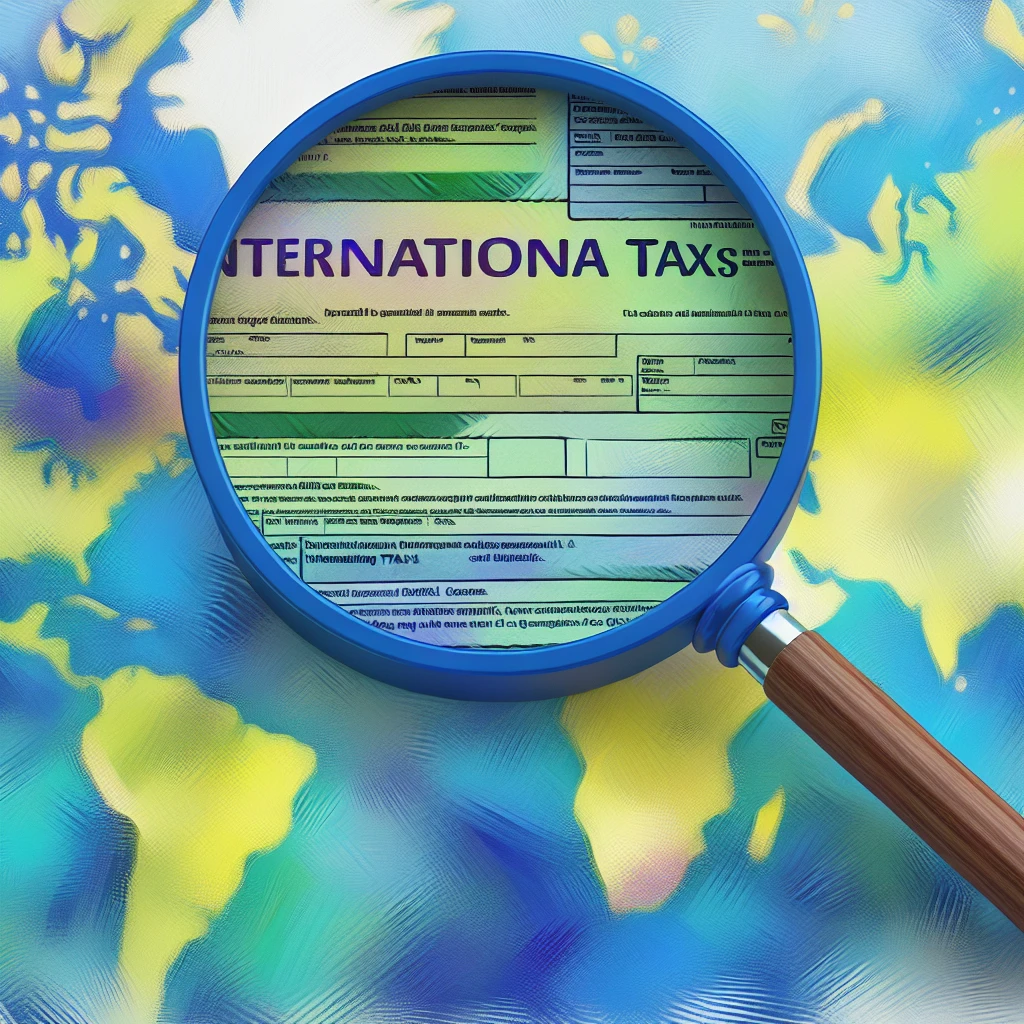The Basics of International Tax Compliance
When it comes to running an ecommerce business, crossing borders virtually can be as complex as it is exciting. The thrill of reaching customers globally comes with the intricate web of international tax laws that can ensnare the unprepared entrepreneur. Understanding the basics of international tax compliance is not just a necessity; it's a strategic advantage in the global marketplace.
At the heart of international tax compliance lies the principle of cross-border taxation. This means that income earned in one country can be subject to tax in both the country where the income is earned (source country) and the taxpayer's country of residence (residence country). To navigate this dual-taxation potential, over 3,000 bilateral tax treaties exist worldwide, aiming to prevent double taxation and fiscal evasion, and to foster economic cooperation between countries.
However, the devil is in the details. Each country has its own set of rules and rates, and these can change with the political wind. For ecommerce businesses, this means keeping a keen eye on the sales thresholds that trigger tax obligations in different jurisdictions, understanding the nuances of value-added tax (VAT), goods and services tax (GST), and adapting to the ever-evolving digital services taxes (DST).
It's not just about paying taxes; it's about understanding where, when, and how much. Compliance goes beyond mere payment to include accurate reporting, timely filings, and strategic planning to minimize tax liabilities. The complexity multiplies when you consider that each country's tax authority has its own set of forms, documentation requirements, and deadlines.
For instance, U.S. businesses with international transactions must be aware of the Foreign Account Tax Compliance Act (FATCA), which requires reporting of foreign assets and bank accounts. Similarly, the European Union has its own set of directives and regulations governing intra-community trade and taxation. Navigating this maze requires not just diligence but also expertise.
Ultimately, international tax compliance is a dynamic puzzle that demands continuous learning and adaptation. It's a field where being proactive, rather than reactive, can save a business from penalties, interest, and the potential for damaging audits. With the right knowledge and tools, ecommerce entrepreneurs can turn the challenge of international tax compliance into an opportunity for growth and expansion.
Key Reporting Requirements and Deadlines
Now, let's delve into the labyrinth of reporting requirements and deadlines that international businesses must navigate. It's a high-stakes game of precision and timeliness, where the cost of missing a deadline can be steep. Every country has its own calendar of tax-related obligations, and it's imperative for businesses to mark these dates in stone. Missed deadlines can lead to penalties, interest on owed taxes, and even legal repercussions that can tarnish a business's reputation.
For instance, the United States requires businesses to report their earnings quarterly and annually with specific forms like the 10-K and 10-Q for publicly traded companies, and various versions of the 1099 form for others. In the European Union, VAT reporting deadlines vary by country but generally occur monthly or quarterly. The EU also mandates Intrastat filings for businesses with a certain volume of trade between member states, and these too have their own submission deadlines.
But it's not just about knowing the dates; it's about understanding the intricacies of each report. Take the United Kingdom's Making Tax Digital initiative, which requires businesses to maintain digital records and submit VAT returns using compatible software. Or consider Australia's Single Touch Payroll reporting, where businesses report salaries, wages, tax withholdings, and superannuation to the Australian Tax Office after each payroll cycle.
Moreover, with the rise of the digital economy, many countries are introducing or have already implemented Digital Services Taxes (DST), which target revenue generated from online advertising, digital platform services, and data sales. These too come with their own reporting requirements and deadlines, adding another layer to the compliance cake.
It's clear that staying compliant requires a well-oiled machine of processes and systems to track and manage these international reporting obligations. It's not just about being organized; it's about being strategically aligned with the global tax environment. This involves staying updated on international tax news, leveraging technology for accurate record-keeping, and possibly enlisting the help of tax professionals who can navigate the complexities of international tax law.
Remember, in the world of international tax compliance, deadlines are not suggestions; they are mandates. Proactive planning, thorough documentation, and timely reporting are the trifecta of success in this arena. By staying ahead of the game, businesses can not only avoid the pitfalls of non-compliance but also uncover opportunities to optimize their tax positions and enhance their global operations.
Strategies for Effective International Tax Planning
When it comes to international tax planning, the adage 'a stitch in time saves nine' couldn't be more apt. Effective tax planning strategies are crucial for businesses looking to navigate the complex web of international tax laws and minimize their tax liabilities. It's not just about compliance; it's about leveraging opportunities within the legal framework to optimize your tax position.
Firstly, understanding the tax treaties between countries can lead to significant savings. These agreements often provide benefits such as reduced withholding tax rates on dividends, interest, and royalties. Savvy businesses will structure their operations to take advantage of these treaties, which can involve establishing entities in jurisdictions with favorable treaty networks.
Transfer pricing is another critical area for international tax planning. By setting the right prices for transactions between related entities in different countries, businesses can allocate income and expenses in a way that minimizes their overall tax burden. However, it's essential to adhere to the arm's length principle and prepare robust documentation to support the transfer pricing policies, as tax authorities are increasingly scrutinizing cross-border transactions.
Moreover, considering the location of intellectual property (IP) can yield tax efficiencies. Many countries offer favorable tax regimes for income derived from IP, such as patents and trademarks. By holding IP in these jurisdictions, businesses can benefit from lower tax rates on the income generated from their intangible assets.
Another strategy is to explore the potential of international tax credits. These credits are designed to prevent double taxation on the same income in different jurisdictions. By understanding the rules and limitations of tax credits in the countries where they operate, businesses can effectively reduce their tax liabilities.
Lastly, staying agile and responsive to the ever-changing international tax landscape is indispensable. With the ongoing efforts by the Organisation for Economic Co-operation and Development (OECD) to reform international tax rules, particularly around digital taxation, businesses must be ready to adapt their strategies accordingly. This may involve restructuring business models, reevaluating supply chains, or reassessing the tax implications of digital services and presence.
In conclusion, while international tax planning can seem daunting, with the right strategies in place, businesses can not only ensure compliance but also significantly enhance their financial performance. It requires a proactive approach, a deep understanding of international tax laws, and sometimes, the guidance of experienced tax professionals. By being strategic and informed, businesses can turn tax planning into a competitive advantage.



